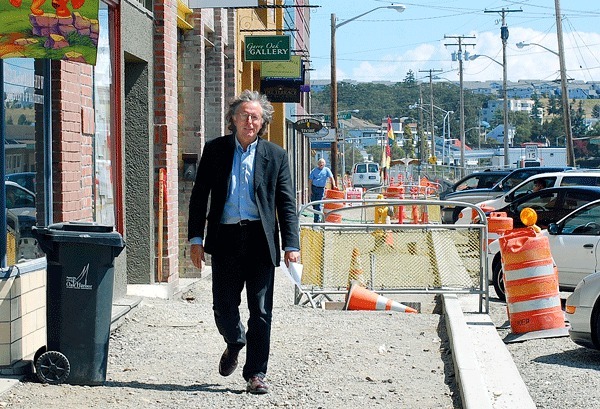The estimated cost of finding human remains on SE Pioneer Way has passed the half million dollar mark.
In a presentation to the city council Tuesday, Project Manager Larry Cort said city officials now estimate the combined cost of the Native American bone drama at about $562,000. That includes $140,000 in unexpected expenses from the contractor, an extra $30,000 for additional survey work and $392,000 for archaeological and related efforts downtown.
The tally does not include the cost of archaeological work at Pit Road, which some have estimated will be more time consuming and expensive, nor does it include the cost of reburying the remains of at least three of the seven Native Americans that have been found under SE Pioneer Way.
In June, construction workers working on the city’s downtown improvement project unearthed bones in in the area of Oak Harbor Tavern. They were identified by state specialists as the remains of three Native Americans.
While tribes and the city agreed to recover and rebury the remains, a state physical anthropologist has since confirmed that additional bones found in small test pits constitute at least four more people. Those remains have been identified but left in the ground.
The fate of those remains, as well as the final cost of archaeological work on SE Pioneer Way, will be decided in a meeting with the tribes and state and city officials next week. According to Cort, the $392,000 price tag is a “place holder” that could fall or increase depending on a number of factors.
“That’s the number you should be most suspicious of,” Cort told the city council.
At the meeting, the tribes will decide whether to exhume the additional remains and rebury them with the first three already recovered, or leave them where they are. They will also talk about archaeological work on the north side of the street, as the work done so far has been solely in what used to be the eastbound traffic lane.
The city has spent about $200,000 on archaeological and security work to date and the rest of the money represents about another month of work, Cort said. But of course that number could change based on what’s found and just how long the work actually takes.
State Department of Archaeology and Historic Preservation officials declined to speculate on future archaeological work but did say they believe digging on the north side of the street will reveal additional remains.
“We’ve always thought that,” said Allyson Brooks, state historic preservation officer and the department director.
Just as uncertain as the cost of archaeological efforts on SE Pioneer Way is work that may be required at other sites, not including Pit Road. Used as a dump site for soil excavated from downtown, human remains have been identified in nine piles and archaeological work is pending.
However, dirt from SE Pioneer Way was also taken to at least three other places. An anonymous whistleblower, who made a number of allegations that later proved false, announced the presence of the first site on Waterloo Road in July. State investigators looked at the site and confirmed the presence of “cultural resources.”
Brooks confirmed this week that two other locations have since been identified. One is a private residence south of town in the Monroe Landing area and the other is located at the old city shops in Oak Harbor.
Neither has been examined for remains yet and Brooks said she didn’t know when that will happen. She also couldn’t say whether archaeological permits will be sought for any of the three properties.
In a later interview, Cort acknowledged the two new sites but said he didn’t know what the future has in store for them or even what the process might be.
“It’s really in the state’s hands,” he said.
In his presentation to the council Tuesday, Cort did offer some good news. While the final cost of the discovery of human remains continues to be a moving number, as of now the city’s $7.7 million road project is still under budget.
Not including Pit Road, possible costs associated with the other three sites, and reburial, the latest estimate to finish comes in at about $7.5 million. He also noted that a lot of progress has been made since road work resumed.
“It’s starting to look more and more like the designed street,” he said.
Substantial completion of the project, which includes everything but finishing touches, such as landscaping and taking down old power lines, will be achieved by Oct. 6. The previous date was Sept. 2.
However, that does not include the block between Ilwaco and Ireland streets, the location of the archaeological dig site. Estimated at about one-sixth of the entire project area, Cort said there are still just too many variables to speculate on when that section of street may be completed.
“I can’t even begin to estimate that,” he said.



